Did you know that every year, there are thousands of accidents in warehouses and industrial settings involving a crucial safety device that plays a vital role in preventing collisions and injuries? This device, which emits a loud warning sound to alert nearby workers and pedestrians of its presence, has a long history dating back to the early 20th century.
Originally developed as a simple mechanical whistle, this safety device has evolved over the years into the modern electronic horn that is commonly found on forklifts and other industrial vehicles today. With the advancements in technology, these horns have become more powerful and effective in providing audible warnings in noisy environments.
In recent years, the use of this safety device has been mandated by OSHA (Occupational Safety and Health Administration) regulations to ensure the safety of workers in industrial settings. Studies have shown that the use of these horns reduces the risk of accidents by a significant percentage, making them an essential tool in maintaining a safe work environment.
Despite their importance, many workers still underestimate the significance of these safety devices, leading to avoidable accidents and injuries. It is crucial for employers to educate their employees on the importance of using and maintaining these horns to prevent workplace accidents and ensure the safety of everyone in the workplace.
What is the purpose of a forklift horn?
A forklift horn is a safety feature designed to alert pedestrians and other workers of the forklift's presence in a busy workspace. The loud sound of the horn can help prevent accidents and ensure everyone in the area is aware of the forklift's movements. Additionally, the horn can be used to communicate with other workers and signal when it is safe to proceed. To learn more about the importance of forklift horns and how to use them effectively, continue reading the following sections.
Forklift horns are essential safety devices that help alert pedestrians and other workers in the vicinity of a forklift's presence. They are standard equipment on forklifts and are required by safety regulations in many countries.
### Importance of Forklift Horns
- Forklift horns play a crucial role in preventing accidents in busy warehouses and industrial settings.
- They help to alert pedestrians and other forklift drivers of a forklift's movements, especially in areas with limited visibility.
- Forklift horns are particularly important in situations where there is a lot of noise, such as in a busy warehouse with multiple forklifts operating at the same time.
### Types of Forklift Horns
- There are several types of forklift horns available, including electric horns, air horns, and backup alarms.
- Electric horns are the most common type and are usually activated by pressing a button on the forklift's dashboard.
- Air horns are louder and are typically used in outdoor settings or in environments with high levels of ambient noise.
- Backup alarms are designed to sound when a forklift is reversing, alerting nearby pedestrians and workers to the forklift's movements.
### Maintaining Forklift Horns
- It is essential to regularly inspect and maintain forklift horns to ensure they are in good working condition.
- This includes checking the wiring, connections, and horn itself for any signs of damage or wear.
- If a forklift horn is not working correctly, it should be repaired or replaced immediately to maintain safety in the workplace.
### Statistics
- According to the Occupational Safety and Health Administration (OSHA), forklifts are involved in around 85 fatal accidents per year in the United States.
- In a study conducted by the National Institute for Occupational Safety and Health (NIOSH), it was found that forklift-related incidents account for around 14,000 serious injuries each year in the U.S.
- Proper use of forklift horns and other safety equipment can help reduce the number of accidents and injuries in the workplace.
https://youtube.com/watch?v=sE_cbYxMrYg
What are the safety features of the audible signaling device on a forklift?
The audible signaling device on a forklift, often referred to as the horn, plays a crucial role in ensuring the safety of both the operator and those around the vehicle. The main purpose of the horn is to alert pedestrians and other drivers of the forklift's presence, especially in noisy or busy environments. It is essential for preventing accidents and reducing the risk of collisions in the workplace.
Key points:
1. The horn should be loud enough to be heard over the ambient noise in the workplace.
2. The horn should be easily accessible to the operator to enable quick and effective use.
3. Regular maintenance and testing of the horn is necessary to ensure it functions properly.
How should the horn be used in different situations while operating a forklift?
When operating a forklift, it is important to use the horn effectively to communicate with others and maintain a safe working environment. The horn should be used in various situations to indicate the forklift's movement, alert pedestrians, or signal potential hazards. Proper horn use can help prevent accidents and promote safety in the workplace.
Key points:
1. Use short, quick horn blasts to signal the forklift's presence when approaching intersections or blind corners.
2. Continuous horn use may indicate an emergency situation or the need for immediate attention from others.
3. Avoid excessive horn use that may cause confusion or desensitize others to the warning signal.
What are the regulations regarding the use of horns on forklifts in the workplace?
Regulations surrounding the use of horns on forklifts vary depending on the location and specific workplace requirements. However, there are general guidelines and standards to ensure the safe operation of forklifts and the proper use of audible signaling devices. Understanding these regulations is essential for compliance and for maintaining a safe work environment for all personnel.
Key points:
1. OSHA regulations require forklifts to be equipped with horns that are in good working condition.
2. Some workplaces may have specific rules regarding horn use, such as designated horn zones or noise restrictions.
3. Proper training on the use of horns and other safety features is necessary to meet regulatory requirements.
How can the horn be maintained to ensure its optimal functionality on a forklift?
Regular maintenance of the horn on a forklift is crucial to ensure it functions properly when needed. Neglecting maintenance can lead to malfunctions or reduced effectiveness of the audible signaling device, putting the safety of the operator and others at risk. Proper care and maintenance of the horn can extend its lifespan and promote safe forklift operations in the workplace.
Key points:
1. Inspect the horn regularly for any signs of damage, such as cracks, corrosion, or loose connections.
2. Clean the horn and its components to remove dirt, debris, or other obstructions that may affect its sound output.
3. Test the horn periodically to ensure it produces a clear and audible sound, and replace any faulty parts promptly.
What are the consequences of improper use or malfunctioning of the horn on a forklift?
Improper use or malfunctioning of the horn on a forklift can have serious consequences for the safety of personnel in the workplace. Failure to use the horn effectively to alert others of the forklift's presence or disregarding warning signals can lead to accidents, injuries, or even fatalities. Maintaining the horn in good working condition and using it appropriately are essential for preventing such incidents.
Key points:
1. Accidents caused by improper horn use or malfunction can result in property damage or personal injury.
2. Inadequate communication due to a faulty horn may lead to confusion or misunderstandings among workers in the vicinity.
3. Regular training on horn usage and maintenance can help prevent accidents and ensure a safe working environment.
Conclusion
In conclusion, the forklift horn is a crucial safety feature that helps prevent accidents and injuries in the workplace. By using the horn properly, forklift operators can effectively communicate their presence to pedestrians and other vehicles, reducing the risk of collisions. Regular maintenance and proper training on horn usage are essential to ensure it functions correctly when needed. Remember, safety should always be the top priority when operating a forklift, and the horn plays a significant role in promoting a safe work environment.
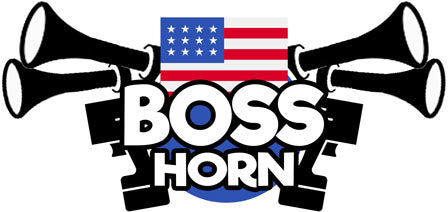
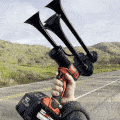
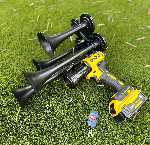
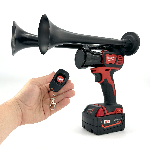
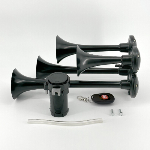






 https://bosshorn.com
https://bosshorn.com

























































